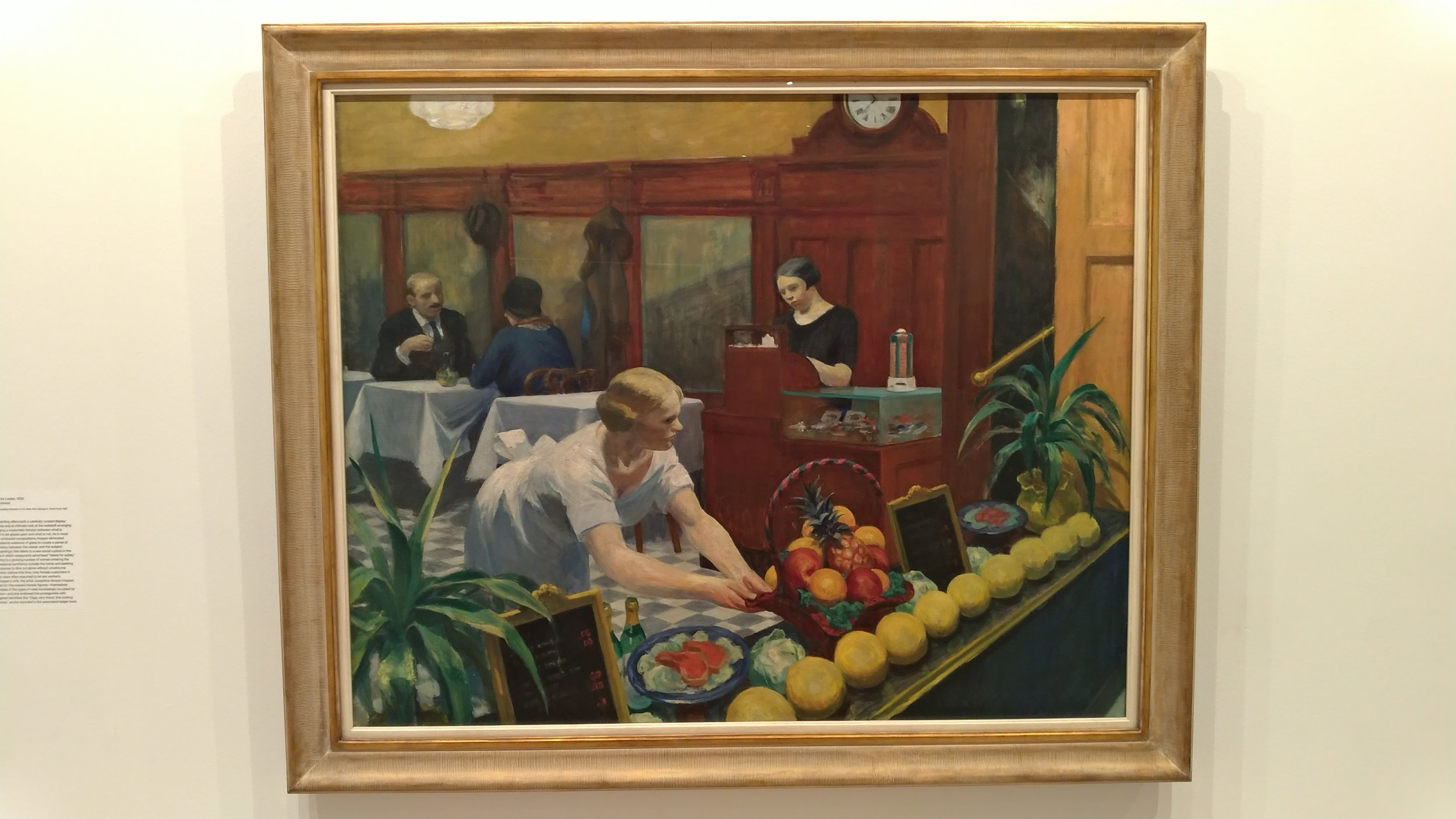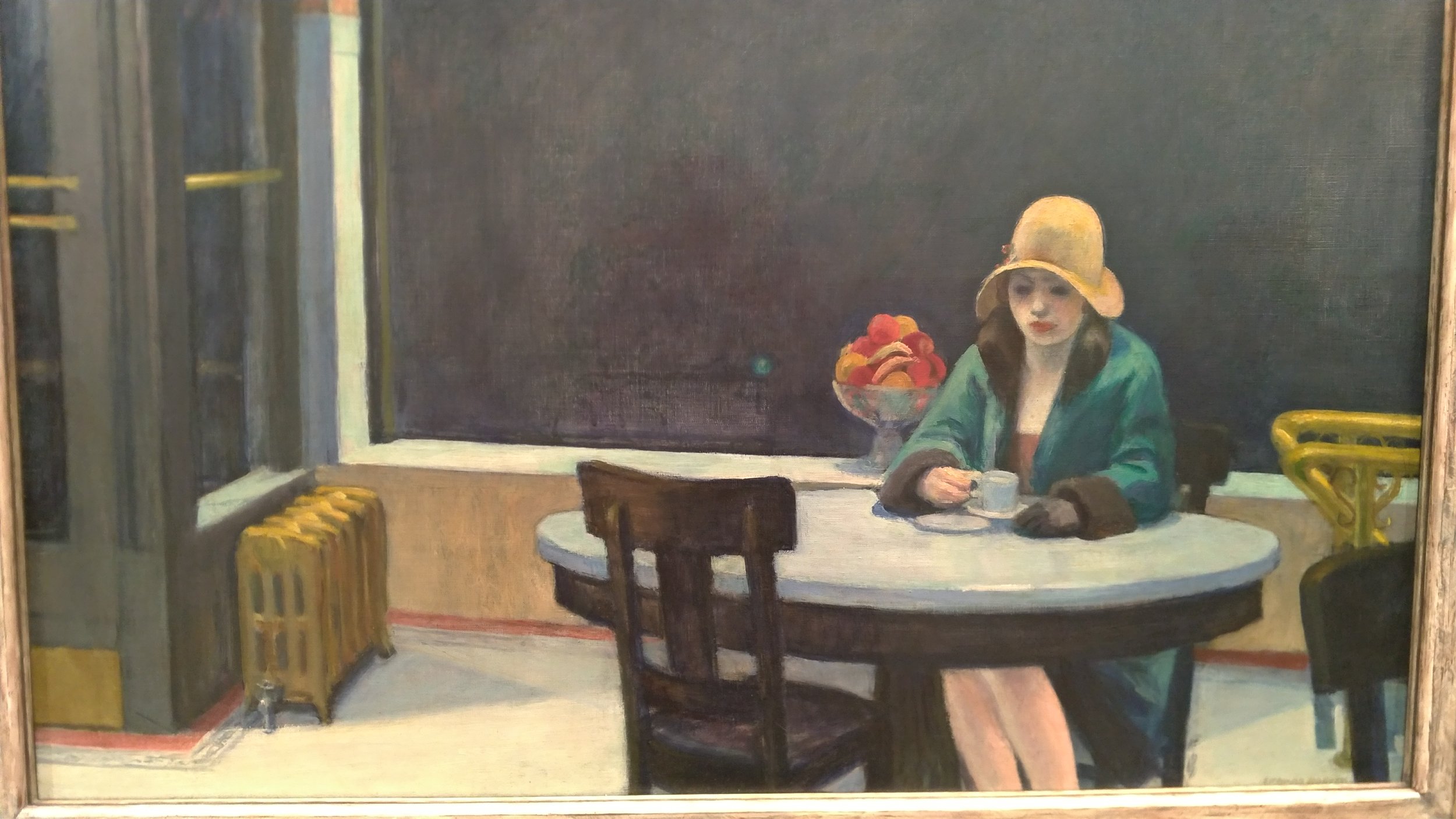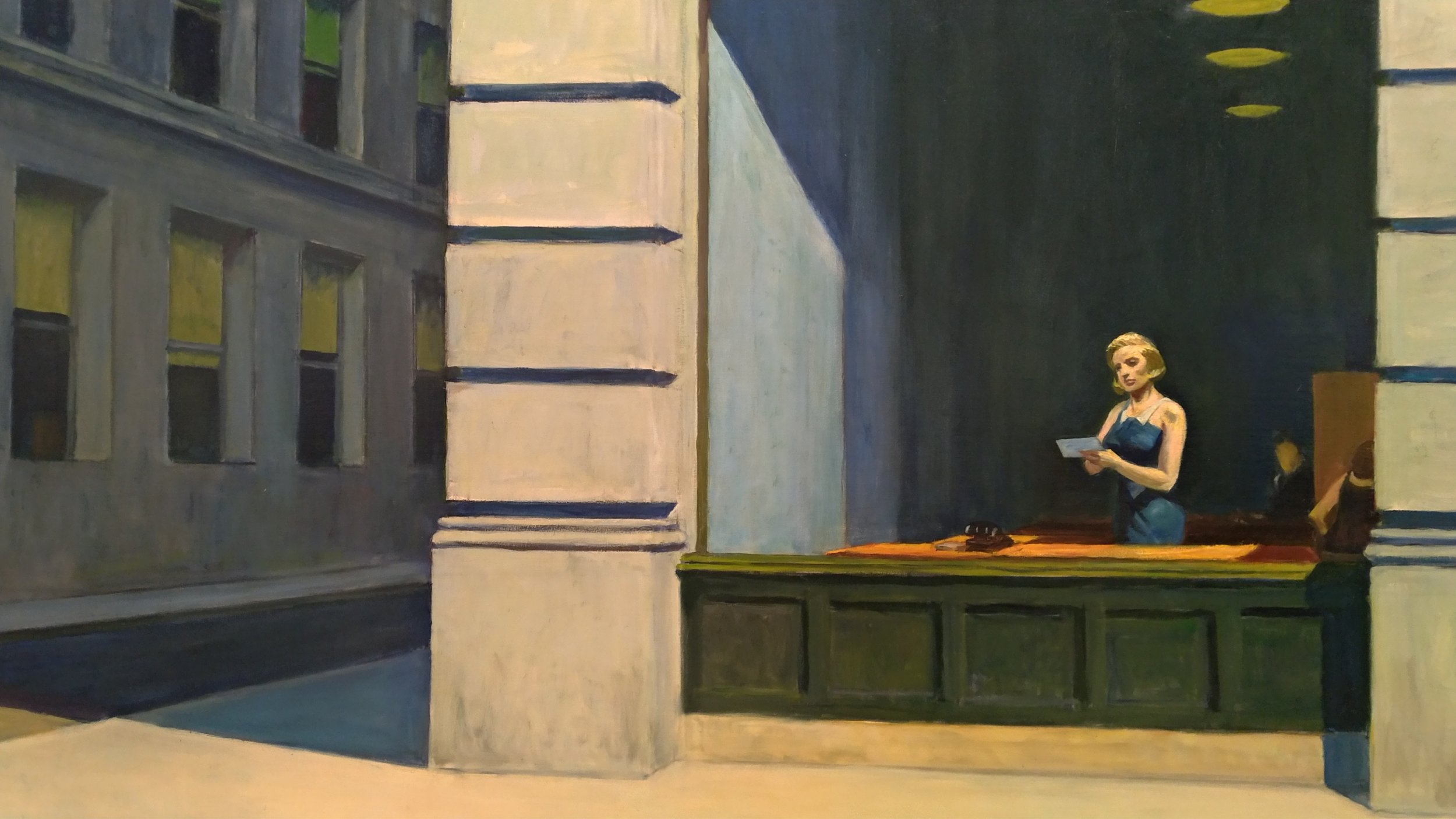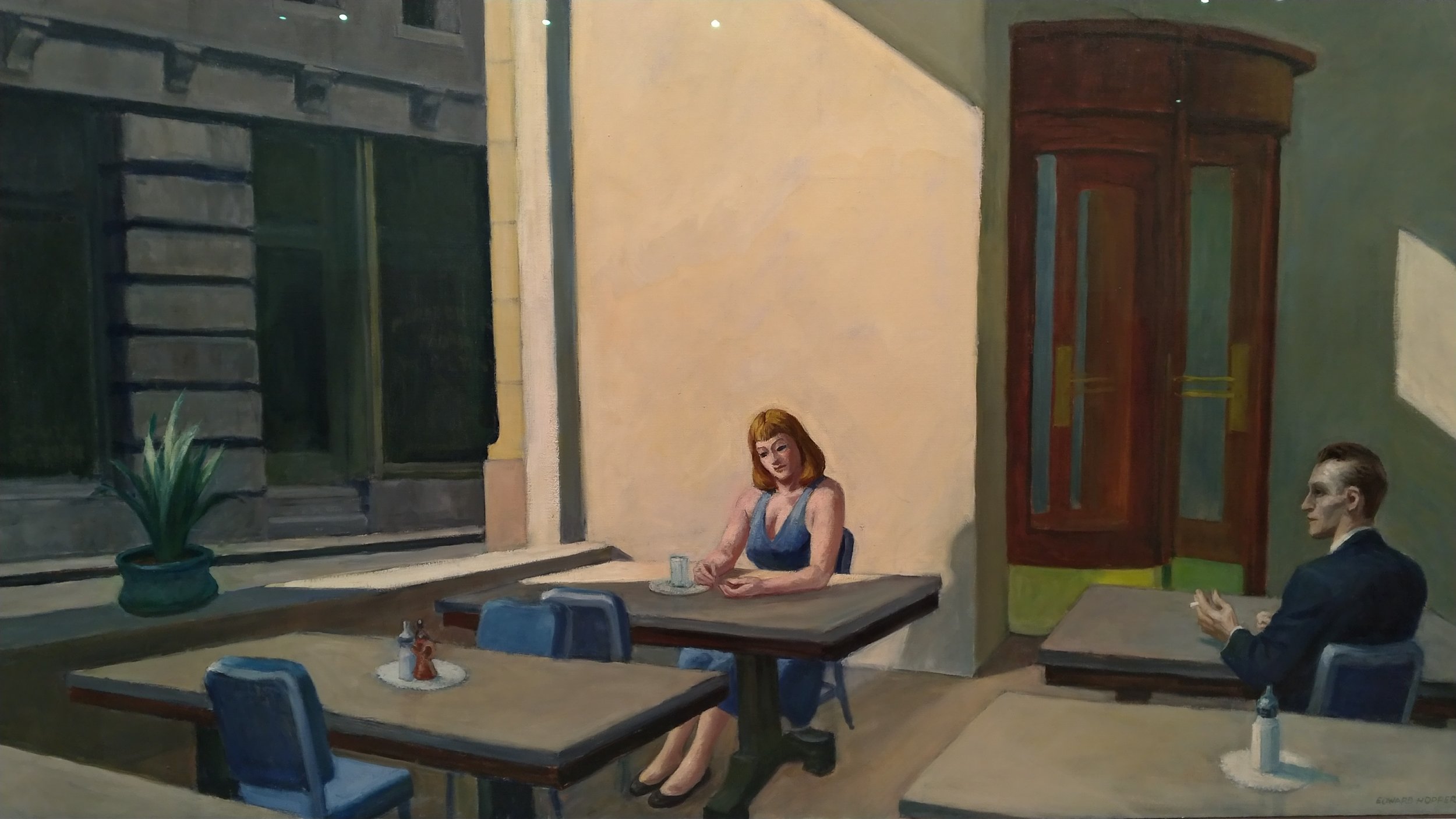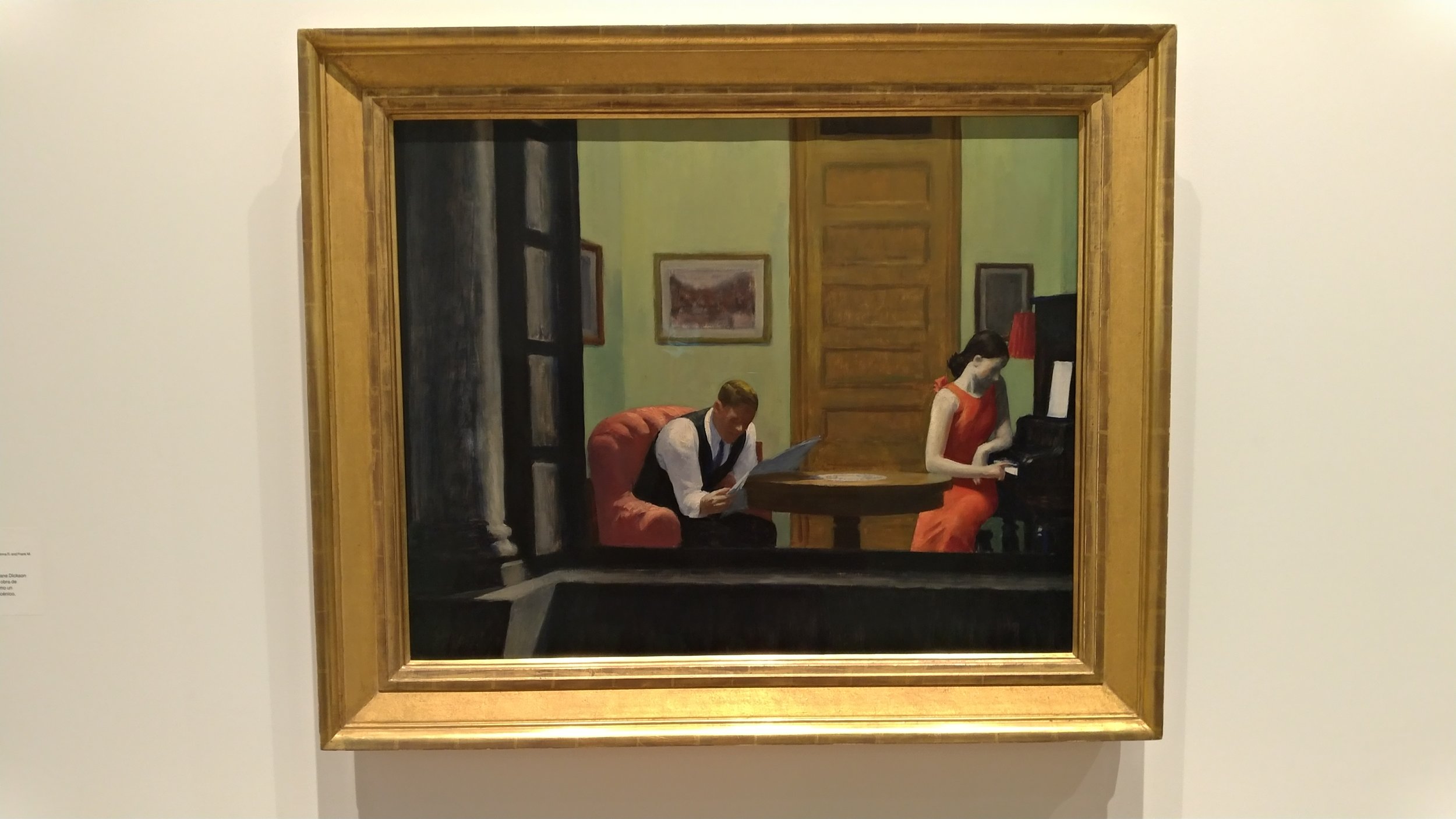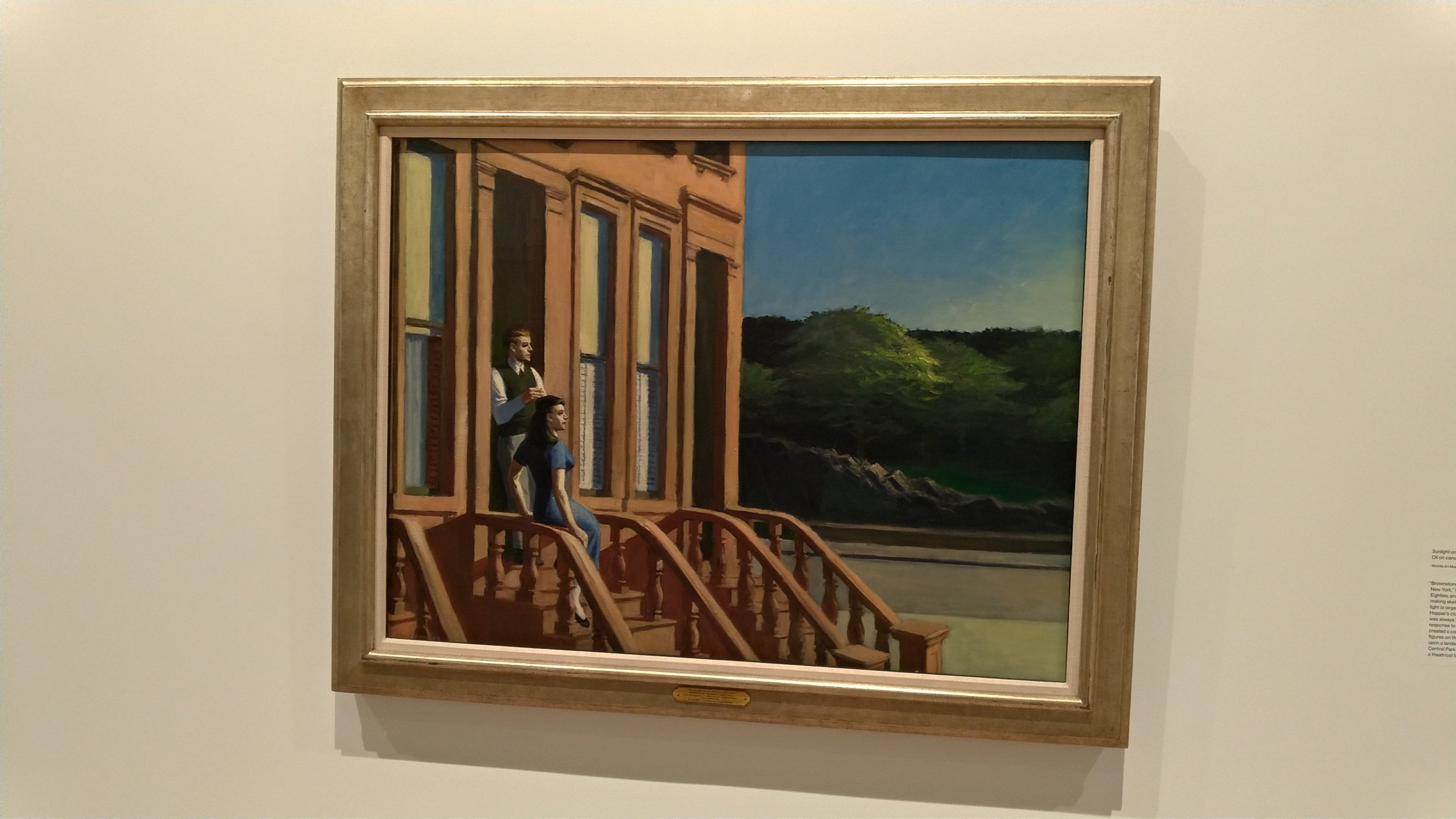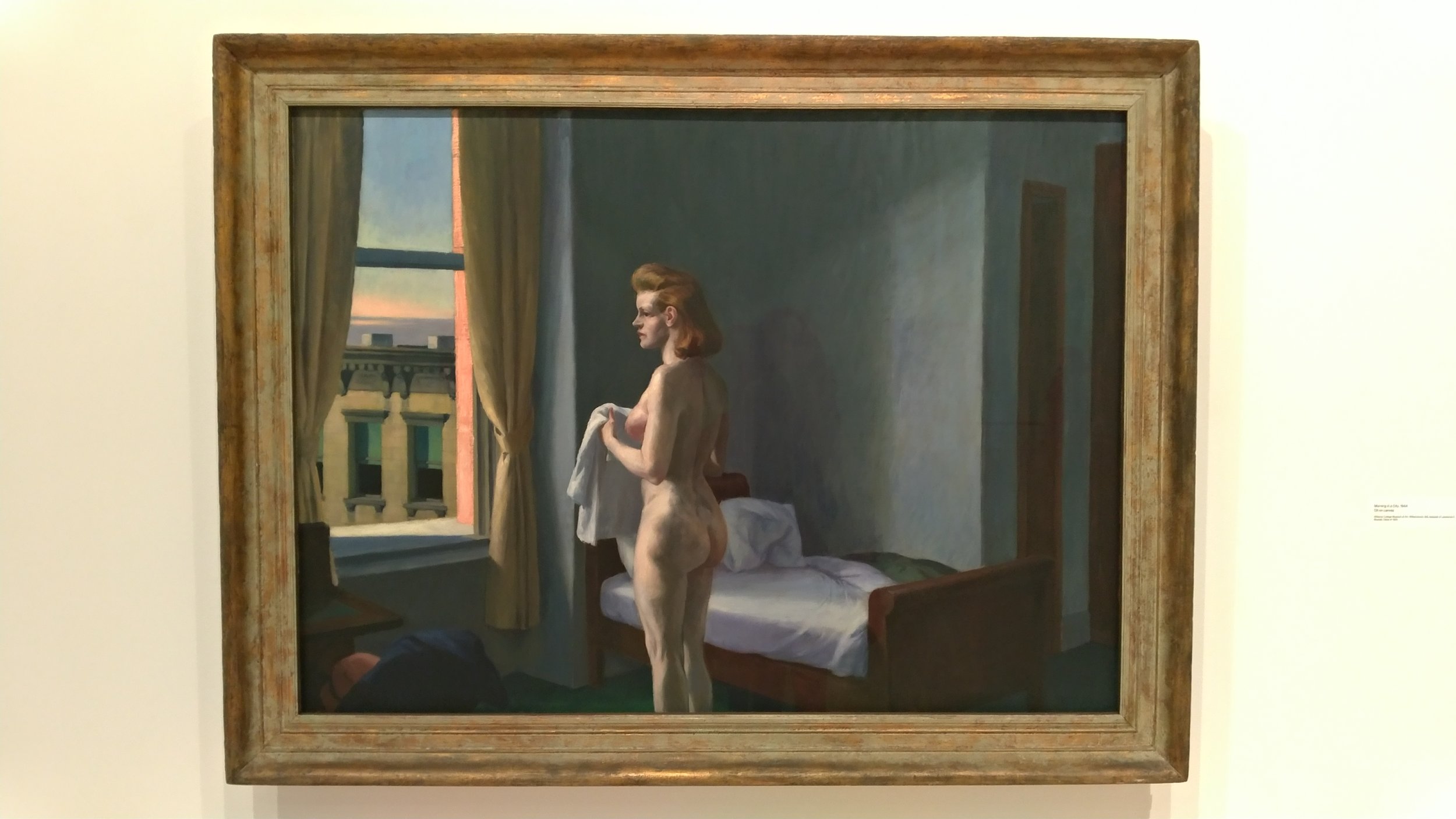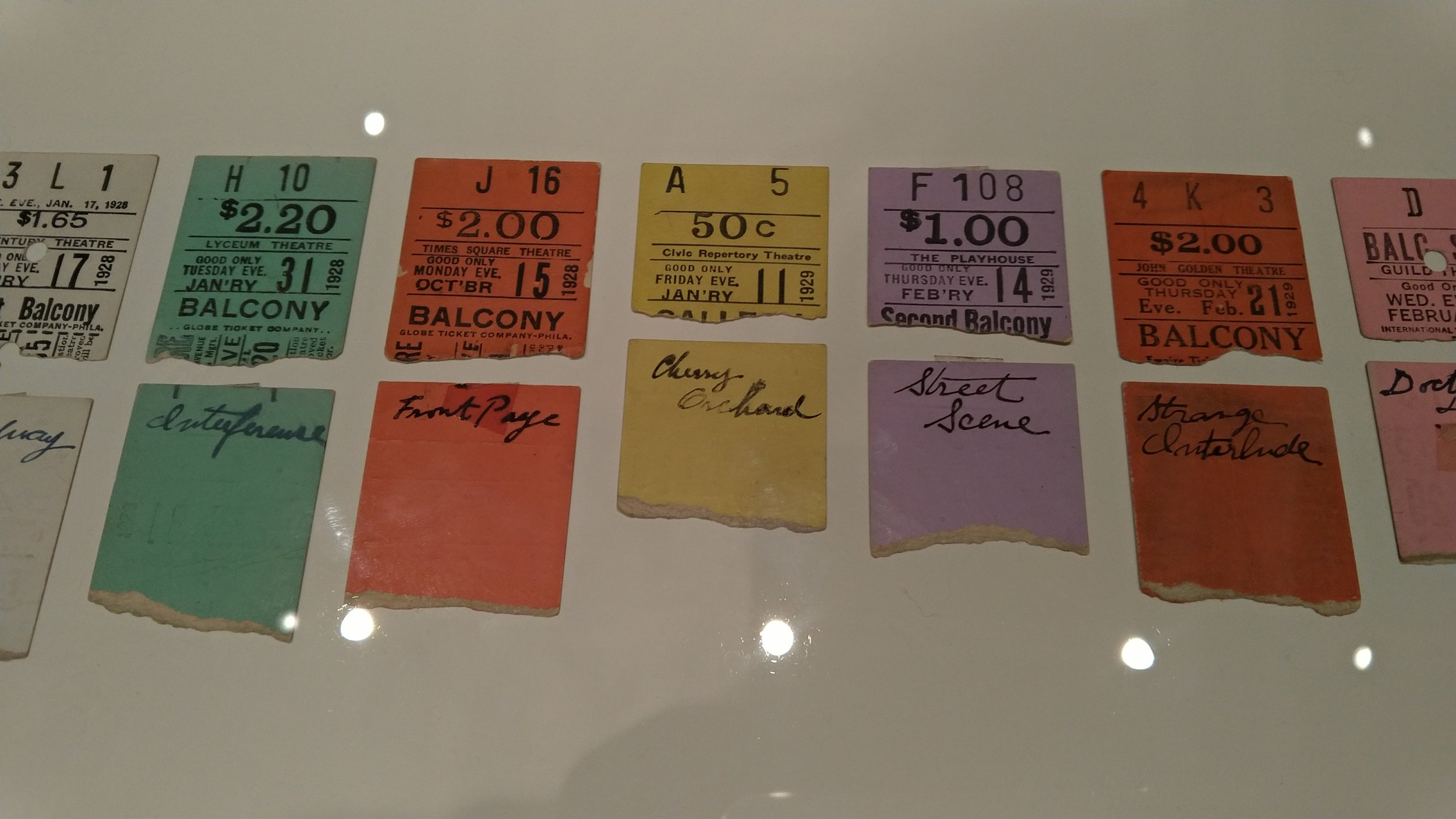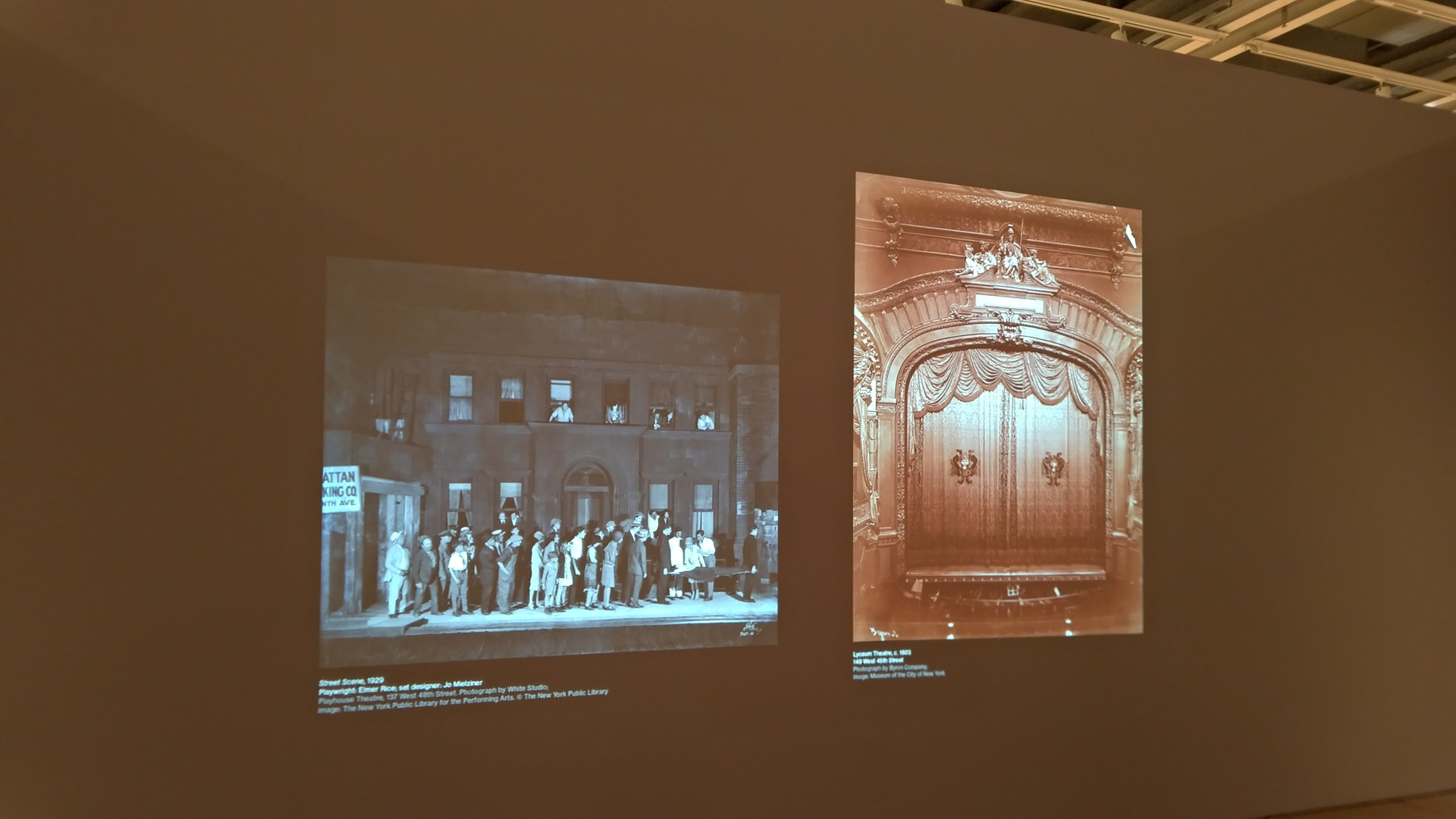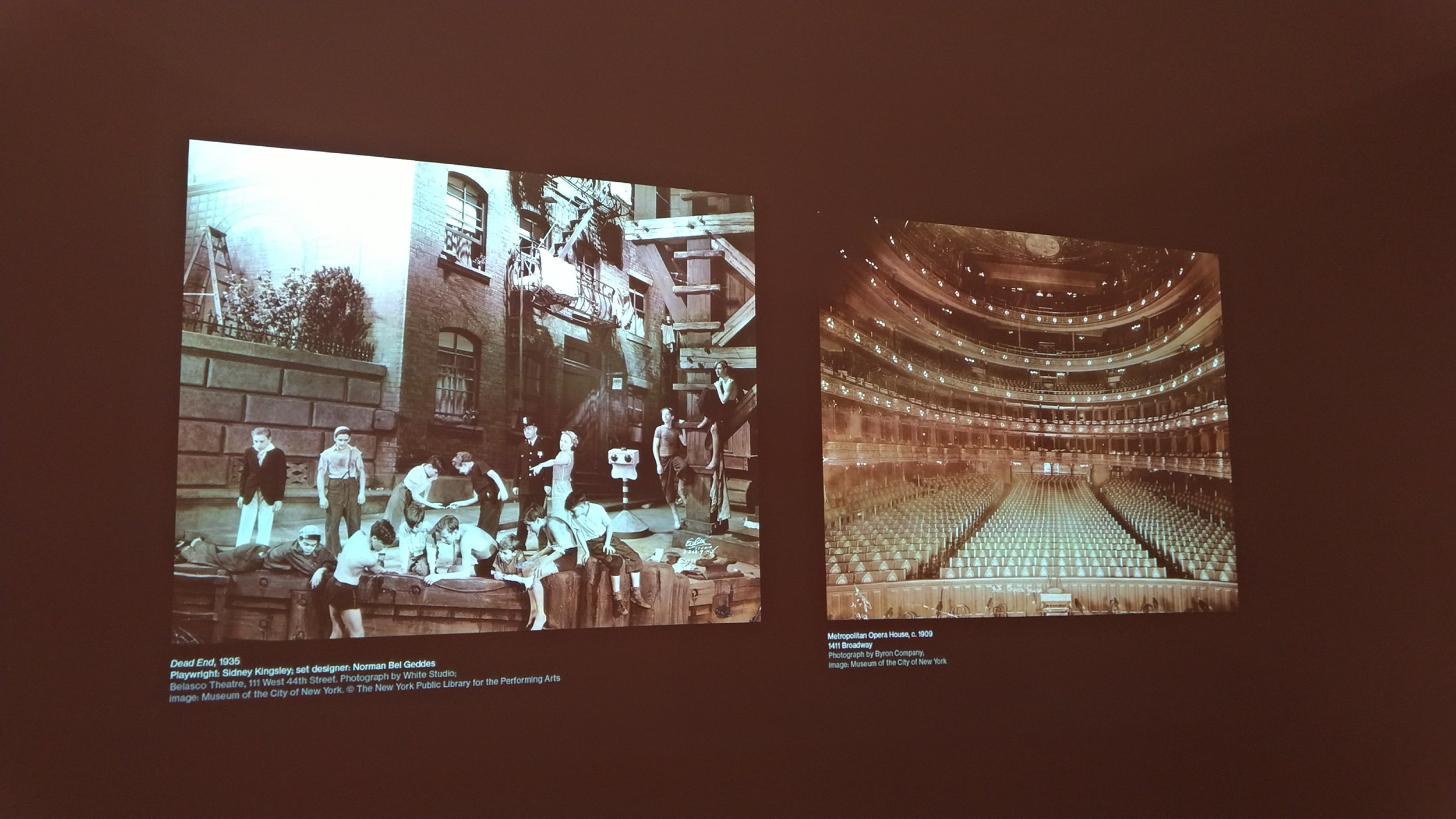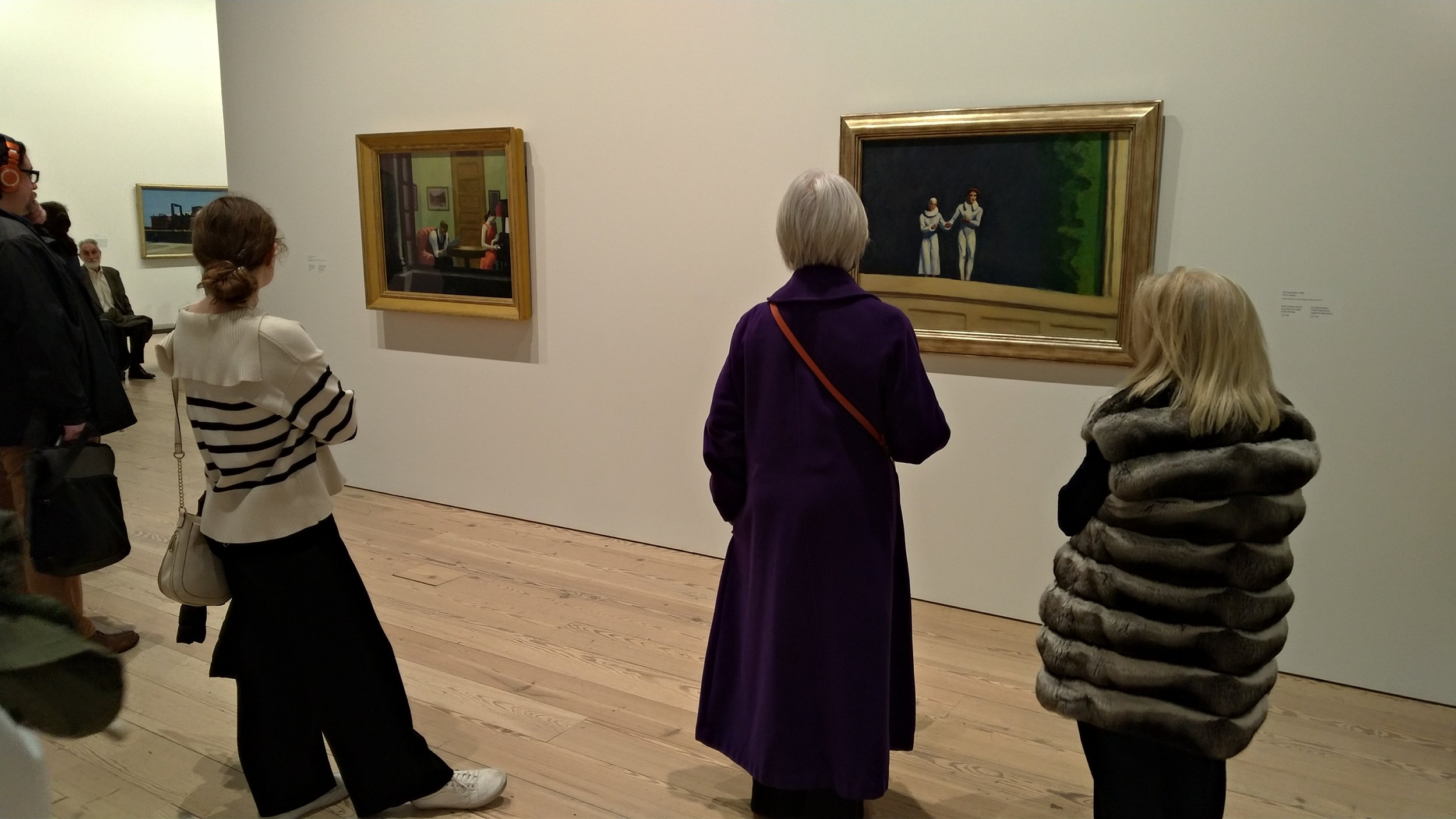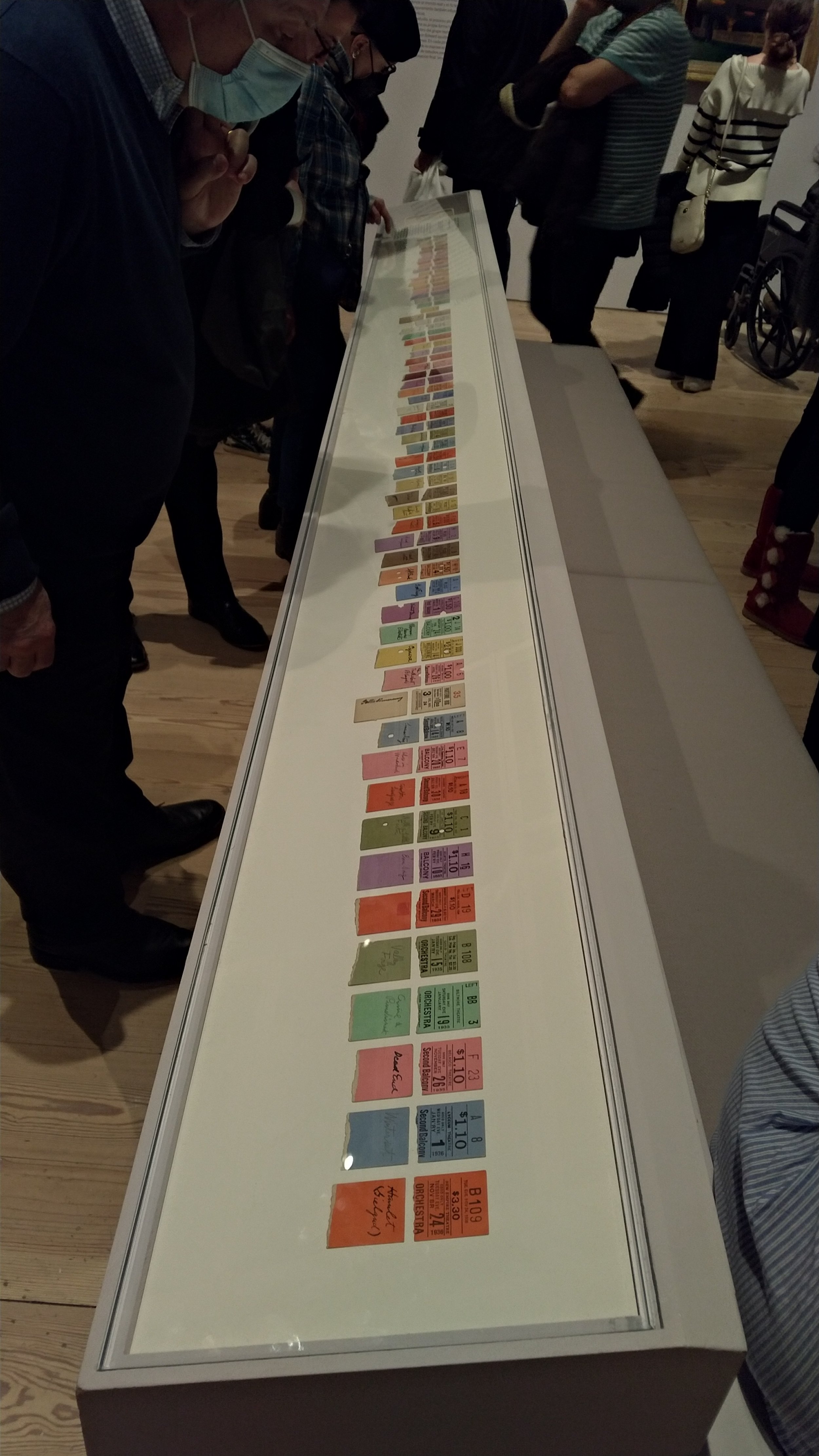The first person that came to my mind as soon as I heard about the exhibition “Edward Hopper's New York” was Greek songwriter Loukianos Kilaidonis. An ardent fan of the American's, he had asked me to bring him the exhibition catalogue the previous time Whitney Museum had organized a retrospective dedicated to the artist, back in 2013. “Lucky girl”, had exclaimed the employee. The books had been sold out by the time I had arrived at the museum store, but an order had just been canceled, so the last remaining copy had just become available. The revered Greek was meant to receive his present.
It was not unexpected that this year's exhibition (at the New Whitney this time) would be a popular one. However, I would never have imagined that New Yorkers would be elbowing each other to come face to face with the waitress arranging the fruits on the display window of the Table for Ladies (1930) restaurant. Is there any accuracy in the improvised statistic that crowds cluster not so much in front of the dreamy Seventh Avenue or Village drugstore depictions but rather in front of landscapes that also include the city's heroes?
First, there are the solitary “stars” of the mythical public “sets” of the metropolis. The woman with the green coat and the yellow hat is gazing at her coffee, absorbed, sitting alone at the Automat table. (Those early self-service establishments, wildly popular with 1920s New Yorkers, including Hopper, were immortalized by Marilyn a few verses before she concluded that “diamonds are a girl's best friend”.) Equally engrossed, but in this case by the office objects, is the elegant employee of a corner-building business with a window wall that allows us to take in from the street the delicious geometry of the scene (New York Office, 1962).
Then, there are the duets, at times unaware of each other, as in the case of the woman in the blue, deep décolleté dress and the man smoking turned towards her. They are seated at different tables, alone, yet covered in the same mystery shroud, in spite of the fact that we're in broad daylight. The “movie” is not realistic. We are in some cafeteria, but we are at the same time in a memory (Sunlight in a Cafeteria, 1958).
In Room in New York (1932), she, in her orange dress, is up to something at the piano, while he, seated in the red armchair, is reading. They have been “caught” voyeuristically by the painter, who is peeking into their electrically-lit private life from the window.
These heroes seem to be comfortably seated in their “set”, their urban moment settled. And then, there are the Restless ones, those who seem to be looking at something unknown and perhaps threatening approach, or at least visible in the horizon.
The light is splendid, the light blue of the sky and the green of the park in the background is shining in Sunlight on Brownstones (1956). In spite of their relaxed poses -the man is smoking leaning against the entrance wall, the woman is seated on the stair railing-, something seems to be keeping the couple at the brownstone stoop alert. They are turning their faces to the right: what are they seeing? The sun? The future? Three other heroines, each one in her individual universe -the woman standing naked in the bedroom, with the unmade bed behind her; the other one in the pink camisole seated on the bed; the one seated at the dining table- all of them are turning their heads, their bodies and their whole being toward that Something in the direction of the window.
Meanwhile, I have long ago “embraced” the crowdedness: since they're pushing me, I will let myself get carried away by the swarms. (Exhibitions don't take place in a vacuum -whoever wants to be left alone with Hopper should come to the museum at nine in the morning or go to a private collection.) Realizing that the New Yorkers who are blocking my view are themselves a subject the painter would have utilized, I decide to make them part of my “frame”.
He, at one edge of the bench, is wearing a jockey hat that leaves part of his snowy hair exposed. Definitely in his eighties. She, at the other edge, must be in her seventies, chic, seated with her legs crossed. Behind their backs there is a display case with the colorful theatre ticket stubs from shows the Hoppers attended between 1925-1937. (Take heart, collectors: Edward and his wife, Josephine -“Jo”- Nivison Hopper, also a painter, kept all the ticket stubs, cut in two, and neatly wrote on them the title of the show.) On the wall in front of them, the “couple” I am watching (strangers to each other, united by fate just now, at the exhibition bench) are watching a slideshow of photos of the exquisite interiors of that era's Broadway theatres, as well as snapshots from the actual shows.
Next to me, the attractive blonde usher of New York Movie, in her costume and stylish 1939 shoes, is standing lost in thought in the liminal side-aisle space, suspended between the dark room (a corner of the screen is visible, as well as part of the spectators) and the red curtain that leads majestically to and from the magical world of the movies. (“Starring” in the role of the usher is, of course, Jo, Edward's permanent model.)
I head toward the museum large window wall, with the unbeatable view to the landscape that gave birth to the beloved paintings, grateful that I was granted such a city. It never feels too tight.
This essay first appeared in Greek in HellasJournal.com on June 19, 2023.
Το κείμενο αυτό πρωτοδημοσιεύτηκε στο HellasJournal.com στις 19 Ιουνίου 2023.
Για να διαβάσετε το ελληνικό κείμενο, κάντε κλικ εδώ.
